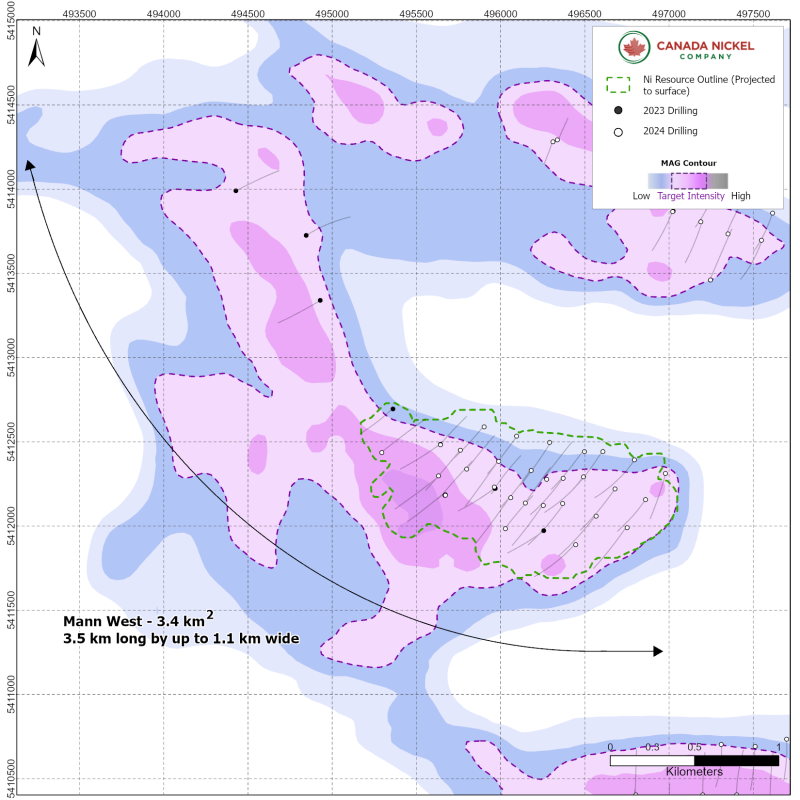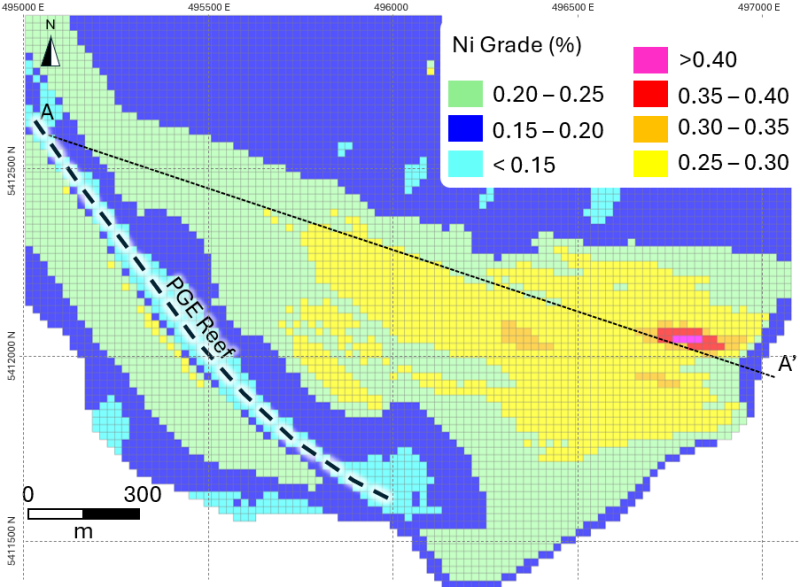
A national security-focused nonprofit organization has released a comprehensive report detailing the workings of a well-funded nominally U.S.-based organization that it says is undermining American energy, pushing left-wing green initiatives, and ultimately advancing Chinese interests.
The report, published by State Armor, outlines the money trail of Energy Foundation China, registered as a 501(c)(3) nonprofit that is technically headquartered in San Francisco but with employees mostly based in Beijing.
‘Energy Foundation China used to be known as the Energy Foundation before it spun off most of its U.S.-based operations in 2019 into a separate organization called the U.S. Energy Foundation,’ the report explains. ‘While still formally organized as the Energy Foundation, since 2019, the organization has used the alias ‘Energy Foundation China’ or ‘EF China’ to differentiate from the now-separate U.S. Energy Foundation. The group was founded by Hal Harvey, a climate activist and entrepreneur with deep ties to numerous left-wing organizations and to China.’
State Armor found that EFC has ‘spent millions each year to bankroll climate advocates who promote phasing out fossil fuels and implementing green energy alternatives like the Rocky Mountain Institute (RMI) and Natural Resources Defense Council (NRDC), the latter of which was the target of a 2018 Congressional inquiry into whether it should register as a foreign agent based on its Chinese funding.’
The Rocky Mountain Institute produced one of the most prominent studies used by many Democrats to justify cutting down on gas stoves and was cited by President Biden’s Department of Energy.
Earlier this year, multiple committees joined to begin an investigation into EFC, and requested files from EFC President Zi Chou about financial resources given to American organizations after Fox News Digital reporting on the group funneling millions of dollars to fund climate initiatives and environmental groups in the U.S.
The report details how EFC ‘led a U.S. state-level legislative drive’ against Bayer, the leading Western fertilizer company, that pushed for lawsuits against the company over a potentially carcinogenic pesticide with the aim of driving the company out of the U.S. and in turn forcing reliance on Chinese suppliers.
The report goes on to outline how the organization has ‘provided millions’ to the International Council on Clean Transportation (ICCT) to support ‘a clean energy future’ and how ICCT was an ‘active supporter’ of climate initiatives in the Inflation Reduction Act targeting increased battery electric trucking infrastructure.
Fox News Digital reported in 2023 that The Energy Foundation sent $480,000 to the Washington, D.C.-based International Council on Clean Transportation, which advocates for widespread EV adoption and policies decarbonizing the transportation sector broadly. It also wired grants — one to the University of Maryland and another to the Jackson Hole Center for Global Affairs — worth a total of $450,000 and earmarked for projects to phase out coal power reliance.
Josh Hodges, Commissioner on the U.S.-China Economic and Security Review Commission and former National Security Advisor to Speaker of the House Mike Johnson and NSC Senior Director in the first Trump Administration, told Fox News Digital that EFC is a ‘textbook example of the CCP’s asymmetric warfare strategy and drive to deepen its dominance over American companies.’
‘Communist China is manipulating a supposed philanthropic network to steer the U.S. away from reliable domestic energy sources and into dependence on Chinese supply chains,’ Hodges said. ‘Whether it’s solar panels, mobile phones, electric vehicle batteries, or agricultural chemicals, Beijing’s fingerprints are all over the ‘green transition’ being pushed on America.’
The report quotes Chinese climate envoy Liu Zhenmin who suggested that Biden’s green energy policies will remain even under a more skeptical Trump administration and said, ‘even if the new Trump administration reverses climate change policies, it is unlikely to completely change the green transition actions that have already begun in various parts of the U.S.’
‘In other words, the CCP’s penetration of the U.S.’ political and industrial systems runs so deep that CCP officials believe that not even a skeptical White House could halt America’s growing dependence upon Chinese technologies,’ the report states.
Will Hild, Executive Director of Consumers’ Research told Fox News Digital that the report ‘exposes a disturbing truth’ that EFC is part of a broader push to undermine American energy independence and ‘stifle’ the Trump energy agenda to benefit the CCP.
EFC is weaponizing woke ideology to pull off this scheme and force American consumers to rely on the Chinese Communist Party for energy sources,’ Hild said. ‘Americans deserve to know the truth about our foreign adversary’s campaign that is poisoning our economy and reshaping our energy future. We applaud organizations like State Armor that are working to expose these grifts against consumers.’
In addition to the EFC’s climate activism, the report focuses on how, by ‘co-opting climate activism and dominating new so-called green supply chains, Beijing converts a domestic weakness into a global strength’ while also detailing the ties between EFC and the CCP.
For example, EFC’s CEO Zou Ji has served in previous roles at top leadership positions in China’s official National Center for Climate Change Strategy within the National Development and Reform Commission of the State Council.
‘He was so deeply tied into CCP leadership that he was included as a part of China’s delegation to the 2015 Paris Climate Talks,’ the report says. ‘Zou’s other affiliations include a position at Tsinghua University at a center where his colleagues include a retired senior PLA officer and a former deputy director of an MSS think tank.’
Zou is not the only EFC figure with ties to the CCP, the report says, pointing to EFC Board Member and Washington, D.C. based attorney Hongjun Zhang, who serves as a member of China’s Council for International Cooperation on Environment and Development and was previously a legislative director for the China National People’s Congress.
Zhang, according to his law firm’s bio page, spent ‘many years in the Chinese government’ that included work at the ‘Ministry of Industry and Information Technology (MIIT), Ministry of Commerce (MOFCOM), State Food and Drug Administration (CFDA), Ministry of Agriculture (MOA), and National Development and Reform Commission.’
The report states that EFC’s operations in China are overseen by the CCP’s National Development and Reform Commission (NDRC) and that the organization’s Beijing headquarters are located in a building owned by a state-owned investment corporation tied to Chinese state media propaganda.
Rep. John Moolenar, R-Mich., who is the chairman of the House Select Committee on the Strategic Competition Between the United States and the Chinese Communist Party, sounded the alarm over the report, telling Fox News Digital ‘This report confirms what we’ve long warned: the Chinese Communist Party is using seemingly innocuous nonprofits to influence American policy and undermine U.S. interests — in this case, our energy independence.’
‘Energy Foundation China operates at the direction of the CCP and is exploiting our charitable system to push policies that benefit Beijing, not the American people,’ Moolenar continued. ‘The Select Committee continues to investigate how CCP-linked organizations infiltrate U.S. institutions, shift critical supply chains toward China, and shape environmental agendas that aim to make America weaker while China gets stronger. We will continue to expose these influence operations and work with Congress and the Administration to safeguard U.S. energy security and national sovereignty.’
The report also points to examples of EFC collaborating with U.S. entities and officials including in 2023 when it ‘provided support’ for an event that featured California Gov. Gavin Newsom during a visit to China and then hosted a forum a month later for a discussion promoting ‘low-carbon cooperation between the two nations.’
Vance Wagner, the vice president for strategic partnerships at Energy Foundation China, pushed back on the report, telling Fox News Digital that ‘Energy Foundation China (EFC) is an independent grantmaking charitable organization that provides funding for research and capacity building related to climate change and China.’
‘Climate change is one of the greatest threats facing our world. Our work is currently focused on China given the scale of its energy sector and its role in global emissions. Despite geopolitical tensions, meaningful engagement with China on climate change and emissions reductions is in everyone’s interests,’ Vance continued. ‘All grants we make support projects related to climate change and China, and are in no way related to influencing U.S. energy policy. EFC does not accept funding from any government or political party.’
‘Neither the Chinese government nor the CCP fund, direct, or control EFC or our grant-making decisions,’ he added. ‘We are compliant with all U.S. and Chinese laws and regulations and do not lobby or support electoral activities in any country.’
The report states that between 2020 and 2021, EFC gave over $1 million to the Department of Energy’s Lawrence Berkeley National Laboratory for funding ‘green energy research’ and laboratory training increasing the efficiency of China’s industrial sectors.
The Biden administration, according to the report, gave $60 million in grants to the Institute for Sustainable Communities, which is a group ‘frequently in collaboration with Energy Foundation China.’
‘America’s energy security is national security,’ Jason Isaac, CEO of American Energy Institute, told Fox News Digital.
‘The State Armor report lays bare how the Chinese Communist Party has co-opted climate activism to shift the U.S. onto so-called ‘green’ technologies that are manufactured, mined, and controlled by China. From solar panels to EV batteries and rare earth minerals, our supply chains are increasingly entangled with a foreign adversary that uses forced labor, ignores environmental safeguards, and openly aims to dominate the global energy future. This isn’t progress—it’s dependence. Real energy dominance means leveraging America’s vast domestic energy resources, not outsourcing our future to Beijing.’
Along with the report, State Armor has sent letters to Republican committee chairs in Congress, including Chairmen Grassley, Lee, Moolenaar, Comer, and Guthrie, that call for prompt oversight on the matter.
‘Congress must act,’ the letter, authored by Lucci, implores. ‘Oversight is urgently needed to expose the full extent of this operation, beginning with Energy Foundation China. The EFC is not a passive observer; it is an active player in a geopolitical contest where America’s energy security and global leadership hang in the balance.’
Fox News Digital’s Thomas Catenacci and Joe Schoffstall contributed to this report
This post appeared first on FOX NEWS








































 , offers a mutually beneficial ‘pathway to production,’ with enCore owning an equity interest and retaining the right to back-in to 51% ownership in the flagship Kaycee Project in
, offers a mutually beneficial ‘pathway to production,’ with enCore owning an equity interest and retaining the right to back-in to 51% ownership in the flagship Kaycee Project in 